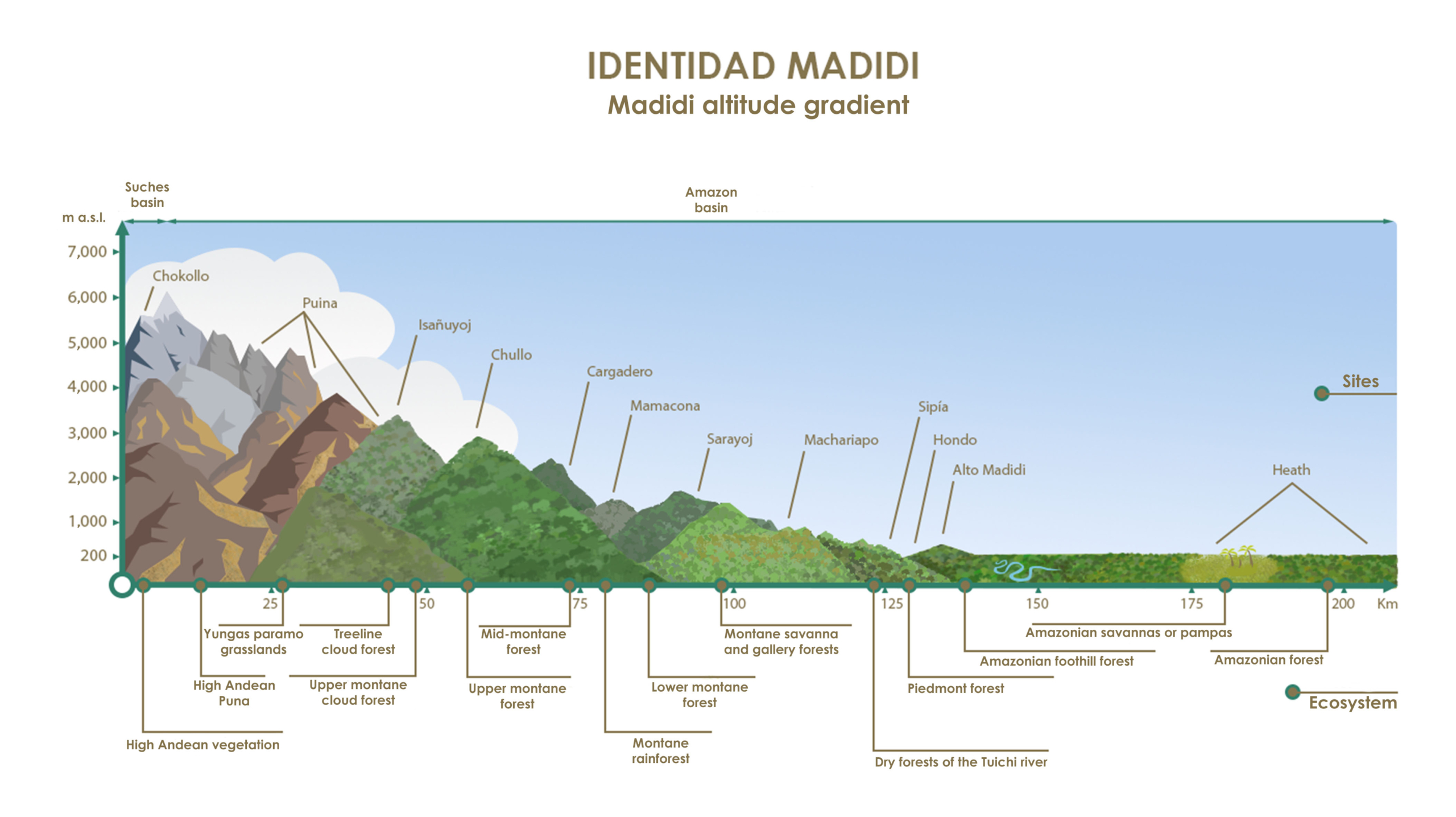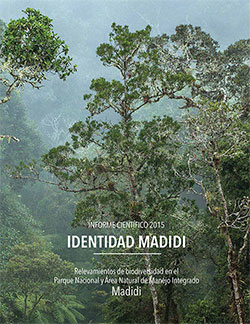Piedmont forest
Alto Río Hondo (2016)
Piedmont forest (2016) The seventh study site of the expedition was conducted between April 22nd and May 16th, 2016, in the piedmont forest, in the middle and upper part of the first escarpments of the Hondo river basin, located at an altitude between 300 to 1,000 m a.s.l. The camp was located on the banks of the Hondo river, at 301 m a.s.l., with primary forest with tall trees. The trees grow smaller as altitude increases, and at the top of the mountain the vegetation becomes shrubby with dense undergrowth. In total, 310 plant species, 253 species and subspecies of diurnal butterflies and 428 vertebrate species were recorded, of which 80 are new species for Madidi and three for science.
[envira-gallery id=»1948″]
| Title | Categories | Update Date | Download |
|---|---|---|---|
|
Scientific Report 2015 1 548 downloads |
Reports | March 30th, 2021 | Download |
|
Scientific Report 2017 1 375 downloads |
Reports | September 1st, 2021 | Download |
|
Scientific Report 2016 1 333 downloads |
Reports | September 1st, 2021 | Download |
[envira-gallery id=»805″]
[envira-gallery id=»806″]
[envira-gallery id=»826″]




 Facebook
Facebook Instagram
Instagram YouTube
YouTube